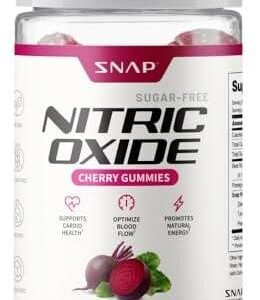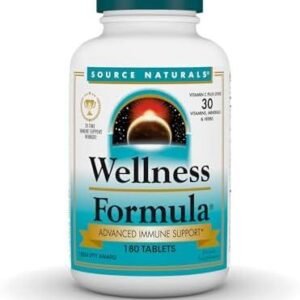Understanding muscle growth is essential for anyone looking to improve their fitness, whether you’re a beginner or a seasoned athlete. Muscle growth, or hypertrophy, occurs when the muscle fibers undergo stress and adapt to become larger and stronger. However, several factors influence this process, including exercise, nutrition, rest, and individual body mechanics. In this article, we will explore the key factors that contribute to muscle growth and provide practical tips to help you reach your fitness goals effectively. Whether you’re aiming to build muscle for sports performance or aesthetic purposes, having a solid grasp of these principles can guide your journey toward better health and strength.
Table of Contents
- Understanding the Muscle Growth Process
- Essential Nutrients for Optimal Muscle Development
- Effective Training Techniques to Maximize Gains
- Recovery Strategies for Sustainable Muscle Growth
- Insights and Conclusions
Understanding the Muscle Growth Process
Muscle growth, or hypertrophy, occurs when muscle fibers experience trauma from resistance training, leading to their repair and growth. This process is largely influenced by factors such as mechanical tension, muscle damage, and metabolic stress. Mechanical tension refers to the force exerted on muscles during lifts, which leads to an anabolic signaling response. When you perform exercises against resistance, microscopic tears occur in the muscle fibers. It is during the recovery phase that the body repairs these fibers, making them stronger and larger. Additionally, metabolic stress is created by the buildup of metabolites during workouts, which contributes to the growth signal. This intricate interplay of factors makes a well-structured training routine vital for anyone looking to increase their muscle mass.
Nutrition plays an equally important role in supporting muscle growth. Consuming adequate protein is essential, as it provides the building blocks needed for muscle repair and growth. Alongside protein, maintaining proper caloric intake ensures the body has enough energy for intense workouts and recovery. Key nutrients can be categorized as follows:
| Nutrition Type | Importance |
|---|---|
| Protein | Essential for muscle repair and growth. |
| Carbohydrates | Provides energy for intense workouts. |
| Fats | Supports hormone production related to muscle growth. |
Pairing a balanced diet with effective training methods can catalyze muscle gains over time, enabling individuals to progressively overload their muscles. Prioritizing rest and recovery is also crucial; muscles do not grow during workouts but rather during the periods when they are allowed to heal and strengthen. Understanding these elements can empower anyone to optimize their training and nutrition for better muscle growth outcomes.
Essential Nutrients for Optimal Muscle Development
For optimal muscle development, your body requires a balanced array of essential nutrients that work synergistically to support growth and recovery. Among these, proteins stand out as the primary building blocks of muscle tissue. Consuming adequate amounts of protein post-workout assists in muscle repair and promotes hypertrophy. Sources such as lean meats, fish, dairy, legumes, and plant-based proteins should form a significant part of your diet. Additionally, carbohydrates play a crucial role by providing the energy necessary for intense training sessions. Incorporating complex carbohydrates like whole grains, fruits, and vegetables not only fuels workouts but also aids in recovery by replenishing glycogen stores.
Another vital nutrient group is fats, particularly healthy fats that support hormone production, including testosterone, which is crucial for muscle growth. Foods rich in omega-3 and omega-6 fatty acids, such as avocados, nuts, and fatty fish, contribute to reducing inflammation and promoting overall recovery. Furthermore, vitamins and minerals should not be overlooked, as they play essential roles in muscle function and recovery. Key nutrients like vitamin D, calcium, magnesium, and zinc can be included through varied food sources or supplements to ensure your body is well-equipped to maximize muscle gains. Below is a summary of these essential nutrients:
| Nutrient | Function | Sources |
|---|---|---|
| Protein | Muscle repair and growth | Lean meats, fish, dairy, legumes |
| Carbohydrates | Energy supply | Whole grains, fruits, vegetables |
| Fats | Hormone production, inflammation reduction | Avocados, nuts, fatty fish |
| Vitamins & Minerals | Muscle function, recovery support | Fruits, vegetables, dairy |
Effective Training Techniques to Maximize Gains
To achieve optimal muscle growth, incorporating a variety of training techniques can enhance your results significantly. One of the most effective methods is progressive overload, which involves gradually increasing the weight, frequency, or intensity of your workouts. This principle challenges your muscles, compelling them to adapt and grow stronger over time. Pair this with compound movements such as squats, deadlifts, and bench presses that engage multiple muscle groups, ensuring a balanced and efficient workout regimen.
Additionally, integrating periodization into your training can prevent plateaus and foster long-term progress. This structured approach involves cycling through phases of different training focuses, such as strength, hypertrophy, and endurance. It’s also beneficial to incorporate active recovery days into your routine, allowing muscles to repair while maintaining activity levels. Consider these techniques to create a well-rounded training schedule that not only maximizes gains but also keeps your workouts engaging.
Recovery Strategies for Sustainable Muscle Growth
To achieve sustainable muscle growth, implementing effective recovery strategies is essential. Recovery isn’t just about resting; it’s a complex process that requires a combination of techniques to allow muscles to heal and grow stronger. Prioritizing quality sleep is crucial, as it plays a significant role in hormone production, particularly growth hormone, which is vital for muscle repair and growth. Additionally, incorporating active recovery days can help reduce muscle soreness and keep blood flowing to the muscles without placing them under additional stress. Activities like light cycling, swimming or yoga can be beneficial.
Proper nutrition also plays a pivotal role in the recovery process. Consider including the following elements in your post-workout nutrition to optimize recovery:
- Protein: Aim to consume a high-quality source, such as chicken, fish, or plant-based proteins, to aid muscle repair.
- Carbohydrates: Replenishing glycogen stores with whole grains, fruits, or starchy vegetables accelerates recovery.
- Hydration: Staying well-hydrated supports metabolic functions and nutrient transport.
Moreover, implementing techniques like foam rolling or gentle stretching can improve flexibility and decrease muscle tension. Below is a simple table of recovery timeframes for various muscle groups that can help guide your training schedule:
| Muscle Group | Recommended Recovery Time |
|---|---|
| Legs | 48-72 hours |
| Chest | 48 hours |
| Back | 48-72 hours |
| Arms | 24-48 hours |
By combining adequate rest, nutrition, and recovery techniques, you’ll create a supportive environment for muscle hypertrophy and overall performance improvement.
Insights and Conclusions
understanding muscle growth involves recognizing several key factors, including nutrition, exercise, recovery, and consistency. By focusing on these elements, you can create an effective plan to achieve your fitness goals. Remember that everyone’s body responds differently, so it’s important to be patient and adjust your approach as needed. With the right knowledge and dedication, you can make significant progress in building muscle and improving your overall health. Thank you for reading, and we hope you find these insights helpful in your fitness journey.




